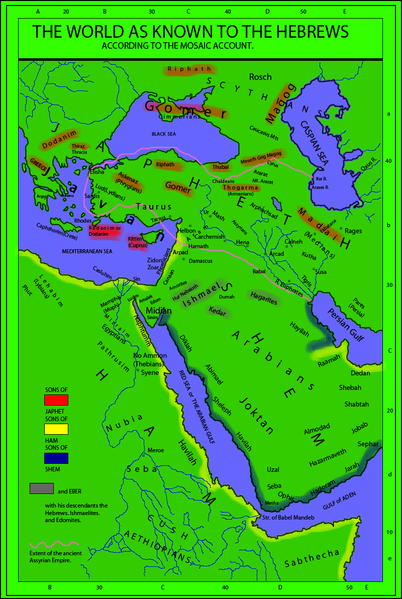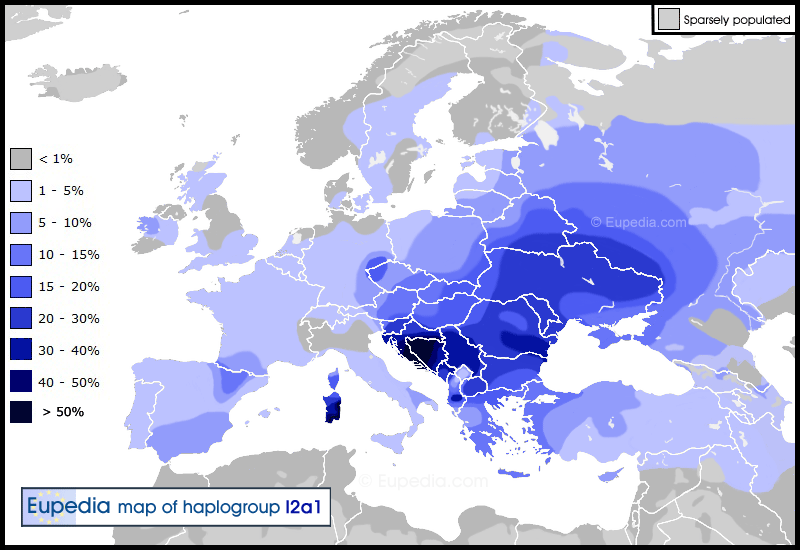Now we are getting somewhere. We are in agreement that "the bulk" is more ancient.I'll tell you why you are wrong, if you like. Though, I must say that there is no need for the bold print.
To begin with, Oppenheimer's 5% estimate for Anglo-Saxon contributions to the gene-pool have been hotly contested as a gross under-estimation. Evidence from Capelli et al, Weale et al and others suggest that the Anglo-Saxons made a considerably larger impact. Others who line up against Oppenheimer's 5% claim are Sir Walter Bodmer who has recently conducted a systematic genetic survey of the British people, and Ken Nordtvedt.
Interestingly too, Oppenheimer based a lot of his work on that of Peter Forster. I have had email contact with Forster recently [his company reanalysed my Ydna results] and he agrees with Sykes that Anglo Saxons are a possibility for 'carriers' of I2a2b to Britain. Anatole Klyosov is of the same view, though he agrees with Tim Owen that most came before the advent of the Anglo-Saxons. Recently too, Jean Manco in The Peopling of Europe suggested that Anglo-Saxons may have carried I2a2b to Britain from Germany along with earlier Celts.
To reiterate my view; a percentage of the English and lowland Scots I2a2b is likely to have arrived with the Anglo-Saxons. There is evidence of a continental, mainly German presence for I2a2b, and enough serious scientists like Sykes and Forster consider it less than a 'Flat Earth' idea that Anglo-Saxons carried I2a2. Sykes has said so since the beginning of Oxford Ancestors, when I2a2 was I1b.
The bulk of I2a2b in Britain seems more ancient, and as Tim Owen says may be connected with pre-Gaelic tribes in the Irish context.
In my opinion, it is Oppenheimer who grossly under-estimates Anglo-Saxon contributions, and you have taken his figure of 5% as the 'math' to work from. Oppenheimer's 5% is truly 'utterly absurd'. Sir Walter Bodmer [in Robin McKie's The Face of Britain, 2006] estimated that Northumberland and Durham were 77% Anglo-Saxon; Sussex and Kent were 71% Anglo-Saxon; Cumbria was 56% Anglo-Saxon; Oxfordshire was 49% Anglo-Saxon etc. These results indicate that 5% is the real 'Flat Earth' theory.
Any questions?
The question is what amount is that bulk. Lets say we have a pre-existing population with a specific (but unknown) percentage of I2a2. The Anglo-Saxons invade. If their percentage of I2a2 was the same, then the percentage in the post-invasion population would not change. If invaders percentage was more then the post invasion population would be higher and vv.
What is the percentage of I2a2 in the source lands? Almost none. 1% of 1%? And this resulted because almost all the I2a2 from the source areas went selectively with the invading army? No?, so where are they?
Are these English areas high in Saxon not also relatively low in I2a2?
OK, so the I2a2 came with the Anglo-Saxons and then, what, selectively dissociated themselves from the Saxons and took off for Ireland leaving England lower in I2a2, producing the "Irish tilt" mentioned by KN?
more math:
If:
Ireland is 2% and that is representative of the whole population including pre-invasion England,
and
post-invasion England is 1% (Irish tilt)
and
the Dark Horror was 50% replacement,
then
the math still requires a 0% content in the invaders.
Maybe the 5% is "flat earth", but I still get zero I2a2b invaders with 50%. Zero or very near to it.
So the bulk = ~99% and the rest are outliers of some kind.
I think I will hang on to the "absurd", but the bold type was really over the top. The basic cause of the absurdity is the lack of an appropriate source population, whether Anglo Saxon or any other.
Last edited:










